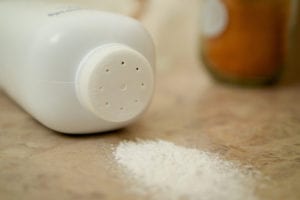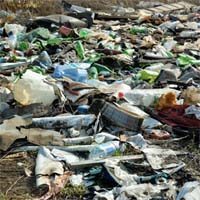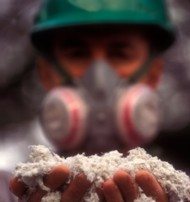New Mesothelioma Case Renews Talcum Powder Fears
 Jurors in a California courtroom are being asked to consider this week whether Johnson & Johnson’s talcum powder products are responsible for another case of malignant pleural mesothelioma.
Jurors in a California courtroom are being asked to consider this week whether Johnson & Johnson’s talcum powder products are responsible for another case of malignant pleural mesothelioma.
This is the sixth such mesothelioma trial involving Johnson & Johnson, which is already named in thousands of lawsuits brought by women with ovarian cancer.
In the latest case, 59-year-old Carolyn Weirick, who was diagnosed with pleural mesothelioma in 2017, claims her disease was caused by a lifetime of accidental inhalation of asbestos fibers when using Johnson’s Baby Powder or Johnson’s Shower to Shower Powder.
Although Johnson & Johnson has maintained that their talc products are pure and safe, Weirick’s lawyer Jay Stuemke told jurors, “Talc is not as pure as people would like to think. You can’t process asbestos out of talc.”
What is the Link Between Talcum Powder and Mesothelioma?
Talc and asbestos are different minerals with different chemical compositions and shapes. Talc is made of magnesium, silicon, and oxygen.
The difficulty for Johnson & Johnson and other companies that produce products from talc is that talc deposits and asbestos deposits often lie in close proximity to each other, increasing the likelihood that the talc rocks, which are pulverized to make powder, will be contaminated with ribbons of asbestos.
Unfortunately, as the Environmental Protection Agency acknowledges, there is no safe level of asbestos exposure. Even a few shards of asbestos, accidentally inhaled or swallowed, can become trapped in the tissues.
The irritation and inflammation caused by these biopersistant fibers can trigger physiological changes that result in a mesothelioma diagnosis even decades after initial asbestos exposure.
Research has shown that the more regular and consistent a person’s asbestos exposure is, the higher their risk for developing malignant mesothelioma.
Are All Talc Product Dangerous?
Any product that contains talc has the possibility of also containing some amount of asbestos, although there are purification processes designed to remove asbestos from talc. According to the American Cancer Society, findings have been mixed about whether purified talc can cause ovarian or lung cancer. It has not been “strongly linked” to other cancers.
On the other hand, asbestos has been definitively linked to deadly malignant mesothelioma, lung cancer, and several other diseases. Even though asbestos has not been officially allowed in talcum products used in the home since the 1970s, talcum powders are not the only products believed to contain it.
In the past year, several kind of makeup products for girls and Playskool crayons have also been found to contain traces of asbestos, raising fears about mesothelioma risks.
Sources:
Sammon, John, “Trial opens accusing Johnson & Johnson talc powder of causing mesothelioma”, August 21, 2018
Siegel, David, “Sixth Johnson & Johnson Talc Powder Mesothelioma Trial Begins in California”, August 21, 2018, Courtroom View Network
Talcum Powder and Cancer, American Cancer Society Website, Accessed August 22, 2018





